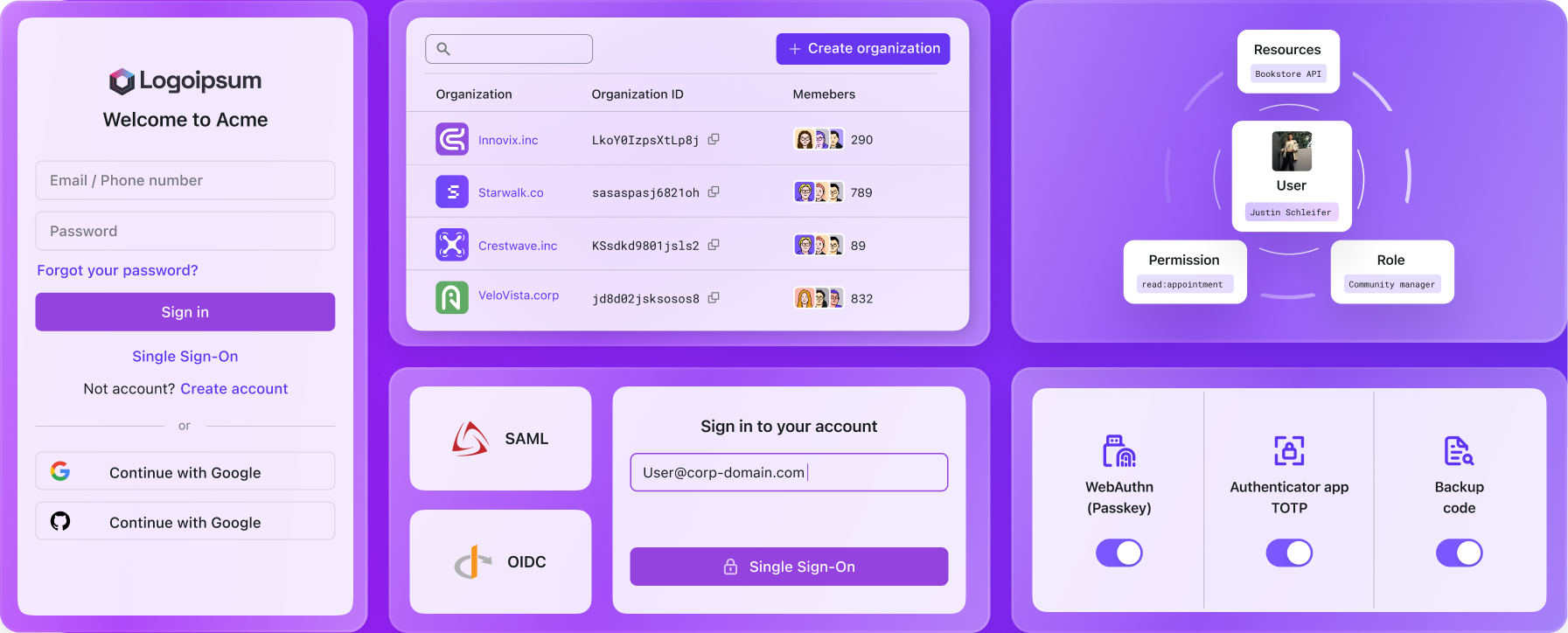CAPTCHA provider buyer’s guide 2025
Learn how does modern CAPTCHA works. Compare Google reCAPTCHA, Cloudflare Turnstiles, and more providers from features, pricing, and integration tips.
What is CAPTCHA?
CAPTCHA (Completely Automated Public Turing test to tell Computers and Humans Apart) is a challenge-response system used to distinguish human users from automated program or bots. It presents tasks that are easy for humans but hard for machines.
For example, a traditional CAPTCHA might show distorted letters or numbers and ask the user to type them. By leveraging human pattern recognition, CAPTCHAs block most scripts and spam bots from abusing online forms and services.
How does CAPTCHA work?
Classic CAPTCHAs rely on tasks like interpreting distorted text or selecting specific images. The distortion (e.g. warped letters overlaid with noise) foils simple OCR (Optical Character Recognition) algorithms.
Modern CAPTCHA solutions have evolved into several categories:
- Interactive CAPTCHA: The user must actively solve a puzzle or perform a specific operation. Examples include “I’m not a robot” checkbox challenges. After clicking the checkbox, it may then prompt the user to select all images with a traffic light or storefront, typing shown characters, or even audio tests. Notably, with Cloudflare Turnstile, a simple checkbox click is enough to verify whether this action is human, without any complicated challenges.
- Non-interactive CAPTCHA: These do not interrupt the user with a puzzle or operation. FFor example, with Cloudflare Turnstile’s non-interactive mode, visitors simply see a small widget with an automatic loading bar. It runs a background check and then quietly returns a success or failure result. This approach prioritizes user experience.
- Invisible or passive CAPTCHA: These work entirely in the background, without any visible test. For example, Google reCAPTCHA v3 invisibly analyzes user behavior (mouse movements, timing, cookies, etc.) to assign a risk score (0–1) without a direct challenge. Users rarely see anything unless the score is too low.
Should we add CAPTCHA protection into the product?
Using CAPTCHA is a trade-off between security and user experience. When selecting a CAPTCHA service, key considerations include:
Can AI bypass CAPTCHA challenge?
CAPTCHAs are effective against basic bots, but determined attackers have countermeasures. Advanced scripts or AI-driven bots can sometimes bypass CAPTCHAs using OCR/image recognition and machine learning. There are even anti-CAPTCHA or solver services (often called bypass-as-a-service) where attackers pay humans or specialized AI to solve CAPTCHAs at scale. For example, Google once reported that older text CAPTCHAs could be solved by bots over 99% of the time.
However, modern non-interactive and invisible CAPTCHAs, like behavior-based or cryptographic background checks, offer better defense to AI attack. Notably, bot traffic is now enormous: On the order of 51% of all internet traffic, with 37% being malicious. So having some CAPTCHA or bot-detection is important even if it is not foolproof.
Besides, adding multi-layered bot protection is necessary, such as device fingerprinting (e.g., via passkeys), rate limiting, Multi-Factor Authentication.
Does adding CAPTCHA hurt the user experience?
Any CAPTCHA adds friction for users. Studies show only about 66% of humans enter a CAPTCHA correctly on the first try, meaning many may get frustrated or abandon a form. For example, lengthy image puzzles or multiple re-attempts can lower conversion rates.
To mitigate this, modern CAPTCHA providers focus on minimizing human effort. Strategies include:
- Only adaptive-challenging users flagged as high-risk.
- Using non-obtrusive signals (mouse movements, timing, and more) instead of puzzles.
- Offering invisible CAPTCHAs that run quietly.
Cloudflare reports that Turnstile “eliminate the frustrating experience of CAPTCHAs” so real users “no longer have to waste time and effort solving visual puzzles”. In practice, many sites only show a checkbox or image challenge when a user’s behavior looks suspicious; normal users may see nothing at all.
Does CAPTCHA block AI agent access third-party services?
Today, more and more AI agents are emerging, designed to automate tasks and interact with third-party services.
Many domain-specific AI agents connect safely and legitimately to third-party apps using standard protocols like OAuth and MCP (Model Context Protocols). This is a secure, approved way to grant an agent access which make users to authorize smoothly.
However, some ambitious “general-purpose” AI agents aim to fully replace human browsing actions. For example, Manus is designed to automate everything a person might do in a web browser, from filling in forms to signing in with a username and password. In real-world tests, Manus struggle to get past modern high-security CAPTCHAs such as Cloudflare Turnstile and Google reCAPTCHA Enterprise, even if the user tries to “hand off” the session to a real person to solve the challenge manually. If you’re building an AI agent, it’s important to design your authentication flows carefully. Relying on browser automation to log in like a human is increasingly impractical because strong CAPTCHAs are extremely good at blocking bot-like interactions.
How much does adding CAPTCHA increase budgets?
CAPTCHA services range from free to paid. Free plans often limit usage or have basic features. For example:
- Cloudflare Turnstile is free with unlimited usage.
- Google’s reCAPTCHA Essentials tier is free for up to 10,000 assessments per month; higher-volume or advanced features require upgrading to Standard or Enterprise.
- hCaptcha offer a free “Basic” tier and charge for Pro/Enterprise (e.g. hCaptcha’s Pro plan starts around $99–$139 per month for 100K requests).
Be sure to check each provider’s plan limits and pricing for your expected traffic and conversion goals.
Usage scenarios of CAPTCHA
CAPTCHAs are typically deployed wherever bots can cause trouble. Common scenarios include:
- Authentication flows: Protecting registration, sign-in, and password recovery flows from bot abuse. CAPTCHA serves as the first line of defense against scripted account attacks. Beyond that, features like sign-in lockout (to stop brute-force password attempts) and adaptive MFA (to add extra layers of verification when risk is detected) can further strengthen security while keeping the experience smooth.
- Form submissions: Guarding public forms (e.g., contact us, feedback, comments, reviews). Without CAPTCHA, spammers can flood comment sections or message boards.
- High-value actions: Preventing fraud in online polls, ticket sales, promotions, or e-commerce checkouts. CAPTCHAs can limit bulk automated voting or scalping (e.g. one vote per person in a poll, one ticket per person).
By inserting CAPTCHAs at these touchpoints, you significantly reduce automated abuse while keeping the system open to legitimate users.
Compare CAPTCHA providers
| CAPTCHA provider | User experience | Plan & pricing |
|---|---|---|
| reCAPTCHA v2 (Google) | Users must click a ”I'm not a robot“ checkbox. This click might or might not challenge them with CAPTCHA image puzzles. | Free (Essentials) for up to 10K assessments/mo; then paid tiers (Standard/Enterprise). Enterprise costs $8 up to 100K and $1 per additional 1K. |
| reCAPTCHA v3 (Google) | Invisible, background risk scoring (no user challenge). | Same pricing tiers as reCAPTCHA v2 |
| reCAPTCHA Enterprise (Google) | Two interactive modes: 1. Score-based (no challenge). 2. Checkbox and adaptive visual challenge. | Volume-based pricing: free up to 10K; $8 up to 100K; $1/1K beyond. Offers extra features like account defender and SMS fraud protection. |
| Cloudflare Turnstile | Three interactive modes: 1.Managed: Cloudflare logic determines which users see checkbox widget. 2. Non-interactive: All user see auto-loading widget, but never interact with the widget. 3. Invisible: Visitors will never see or interact with the widget. Invisible challenges should take a few second. | Almost completely free. Free plan: Up to 20 CAPTCHA widgets, 15 hostnames per widget, unlimited volume. Enterprise plan: Unlimited widgets. |
| hCaptcha | Interactive image classification tasks (similar to reCAPTCHA v2). Focuses on privacy, but puzzles can be complex. | Free up to 100k requests per month. Pro plan ~$99/mo. Enterprise custom plans. |
| FunCaptcha (Arkose Labs) | Gamified micro-games (rotate/slide objects, simple quizzes). More engaging puzzles intended to defeat bots. | No free tier. Only provide Enterprise solution (part of Arkose Bot Management) and contact for pricing. |
| Friendly Captcha | Fully invisible proof-of-work puzzle. No user action needed with all solved in the background. | Free non-commercial tier (1 domain, 1000 requests). Paid plans: Starter €9/mo (1K req); Growth €39/mo (5K req); Advanced €200/mo (50K req); Enterprise custom. |
| BotDetect (Captcha.com) | Traditional image or audio CAPTCHA with letters/numbers. | Self-hosted and License-based. No free plan. APT license fee about $99/year. |
Among these, Cloudflare Turnstile stands out today. It’s free, easy to integrate, and unobtrusive. Turnstile delivers robust bot blocking without forcing puzzles on legitimate users, and it “never harvests data for ad retargeting”, fully respecting user privacy. For most sites, Turnstile offers the best balance of security, UX, and cost.
Simplify CAPTCHA integration in your sign-in flows
The easiest way to add CAPTCHA is to use an integrated identity platform.
Logto, a developer-friendly IAM solution, supports top providers like Google reCAPTCHA Enterprise and Cloudflare Turnstile, so you can enable CAPTCHA in just a few clicks.
With Logto, your team can secure your entire authentication flows without dealing with complex implementation work, including sign-up, sign-in, account recovery, SSO, MFA, multi-tenant management, etc. Learn more about Logto’s CAPTCHA or reach out to the team if you’d like explore more CAPTCHA provider options.

